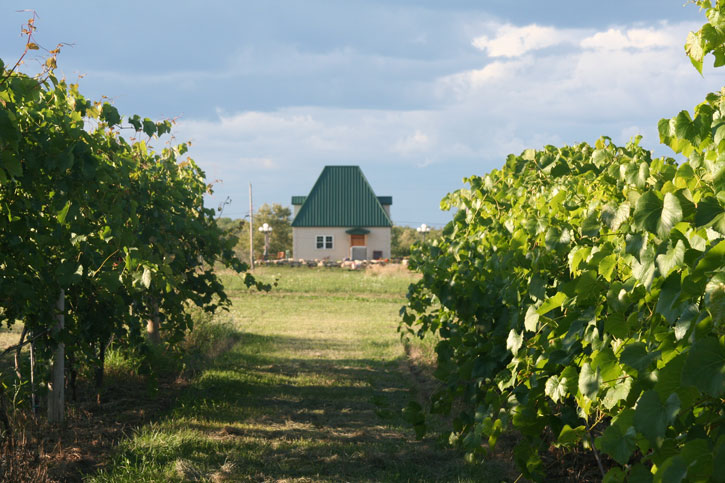
Vineyard view of Northern Sun Winery, the only Estate grown winery in the U.P. with a tasting room on site. Photo courtesy of Northern Sun Winery.
Picture a leisurely drive along one of Michigan’s storied wine trails, but instead of the familiar destinations near Traverse City, you’re making your way down U.S. 2, stopping at the Upper Peninsula’s vineyards and tasting rooms. The recent growth of the wine industry in the U.P. has been significant, although the number of wineries is still small compared to the Lower Peninsula. Of the 100-odd wineries in the state, only eight are located north of the bridge. Varieties of U.P.-produced wines include cabernet, pinot noir, late-harvest riesling, and some wonderful fruit wines such as blueberry, cherry, and apple.Growing grapes capable of producing flavorful wines is both an art and a science, and growers on the Upper Peninsula must take special care when dealing with the region’s harsh winter climate. These include using varieties of grapes more adaptable to colder regions, including Marquette, St. Pepin, Brianna, and Frontenac. During the late 20th century, researchers at the University of Minnesota and elsewhere developed these hybrid grapes mostly for this purpose. Location is also an important factor. Most U.P. wineries are located near the Lake Michigan shoreline, which places them in the same microclimate zone as their counterparts in the northwestern Lower Peninsula.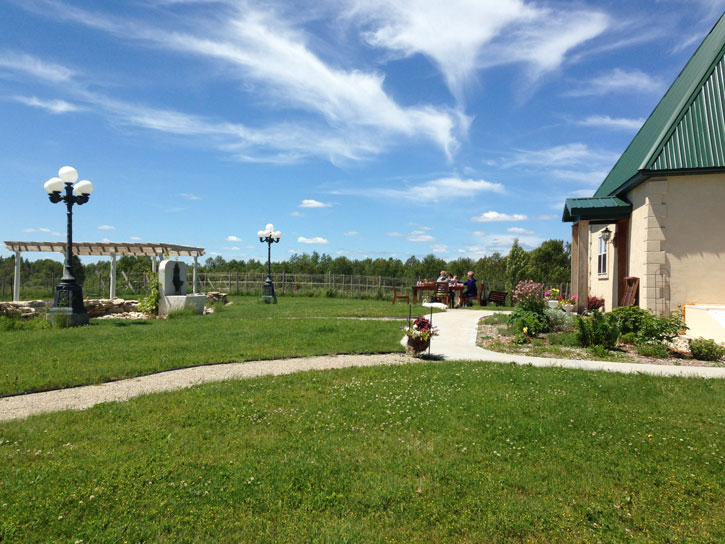
Outdoor seating at Northern Sun Winery with a view of the vineyards (seen in the other photo above). Photo courtesy of Northern Sun Winery.
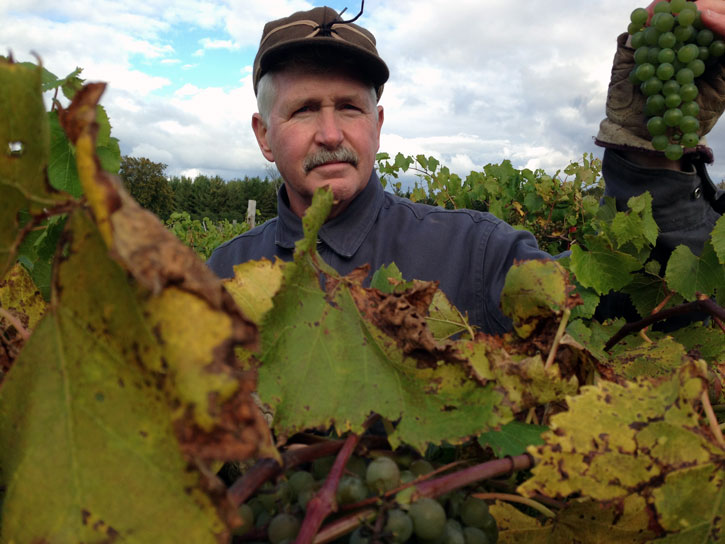
Winemaker Dave Anthony examining the grapes at harvest. Photo courtesy of Northern Sun Winery.
The colder climate also necessitates a shorter growing season. Planting takes place in late spring, with the season’s yield harvested mid-September to mid-October. After the complicated process of pressing and filtering the grapes, the newly produced wine is allowed to age. White wines typically need nine months to mature, while red varieties can require up to three years.
Varieties of U.P.-produced wines include cabernet, pinot noir, late-harvest riesling, and some wonderful fruit wines such as blueberry, cherry, and apple.
The photos above were provided by Northern Sun Winery (983 10th Rd., Bark River, 906/399-9212), the only Estate Grown winery in the Upper Peninsula with a tasting room on site.×The small, simply decorated Manistique on the Harbor Tasting Room (103 W. Lakeshore Dr., Manistique, 906/341-2303) is a testimony to Michigan’s growing wine industry. Hours of operation vary considerably, with spring hours 10am-5pm Thursday-Saturday. After Memorial Day and running until the end of tourist season, expect to see the tasting room open seven days a week, often well into the evening.
With more than 14,000 acres of vineyards, Michigan is one of the most prolific grape-growing states, producing more than 375,000 cases of red, white, and fruit wines each year. Mackinaw Trail Winery uses grapes harvested from across the state to make their award-winning wines. The tasting room in Manistique is one of four such facilities operated by the winery, in addition to the production facility in Petoskey. The company is so named because its tasting rooms are located along various northern Michigan locations, with Mackinaw City as its central point.
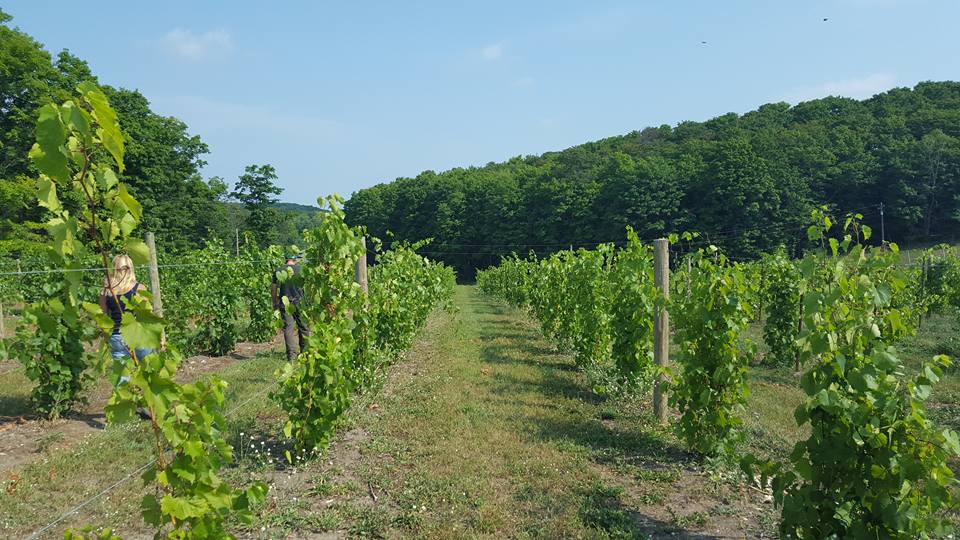
Grapes on the vine in a Marquette vineyard. Photo courtesy of Mackinaw Trail Winery.
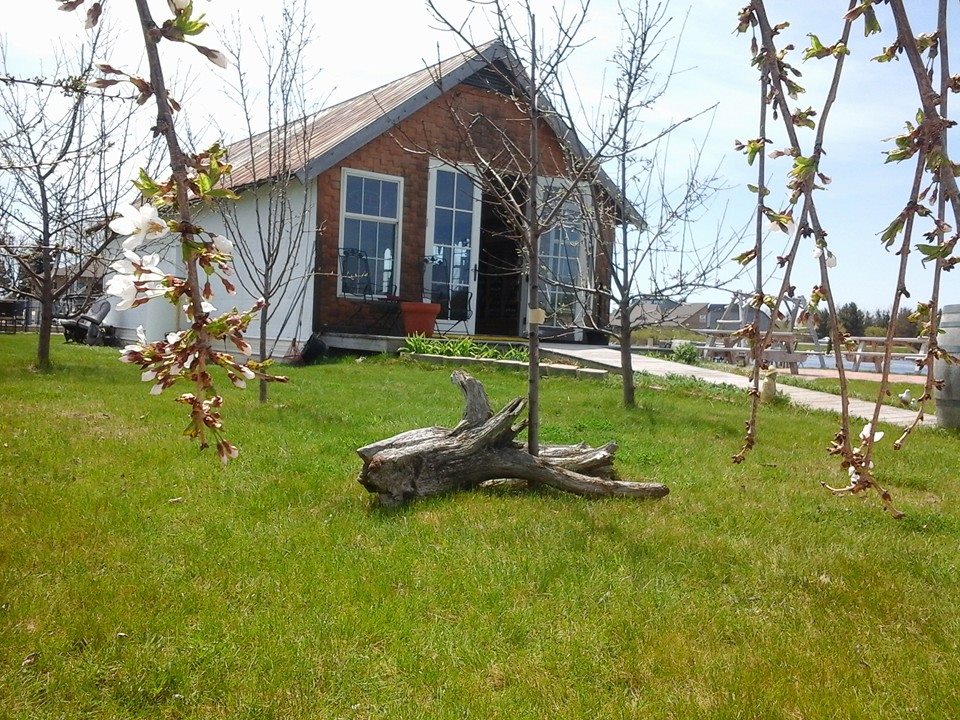
Manistique on the Harbor Tasting Room. Photo courtesy of Mackinaw Trail Winery.
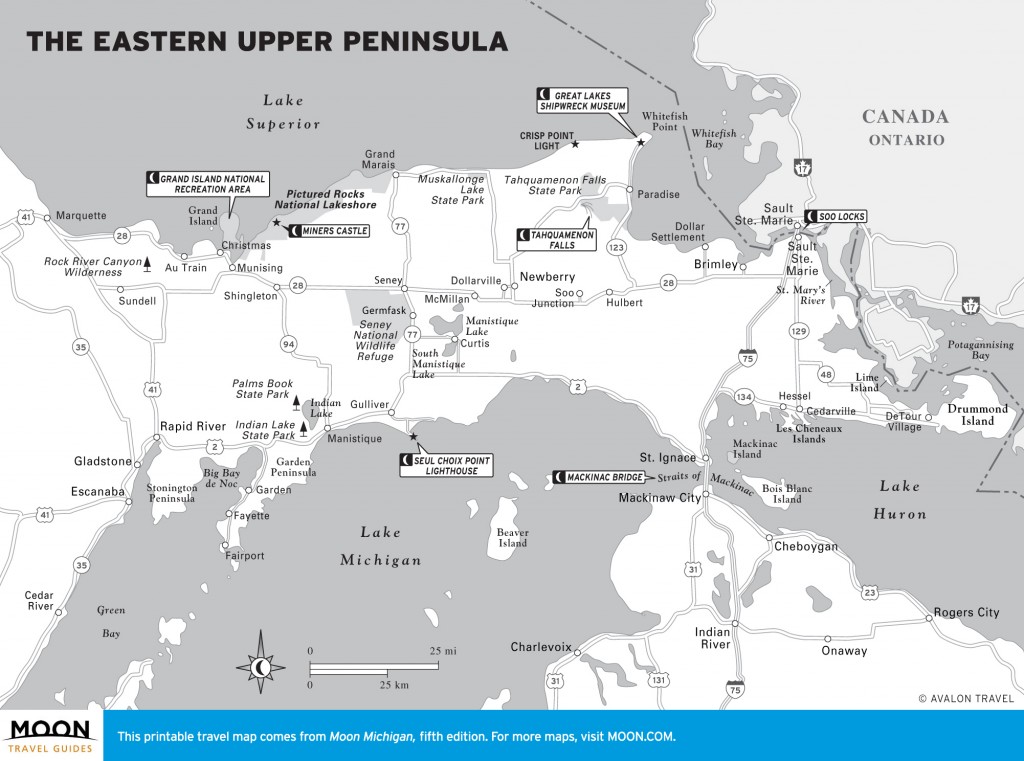
The Eastern Upper Peninsula
Excerpted from the Third Edition of Moon Michigan’s Upper Peninsula.